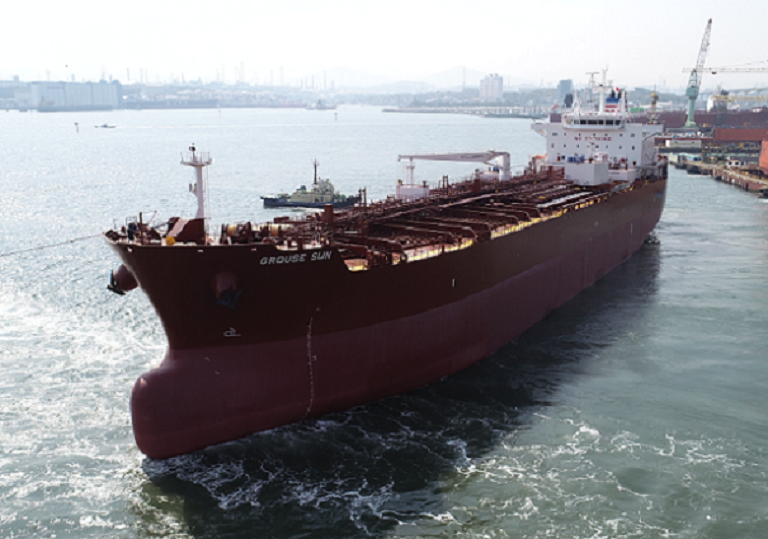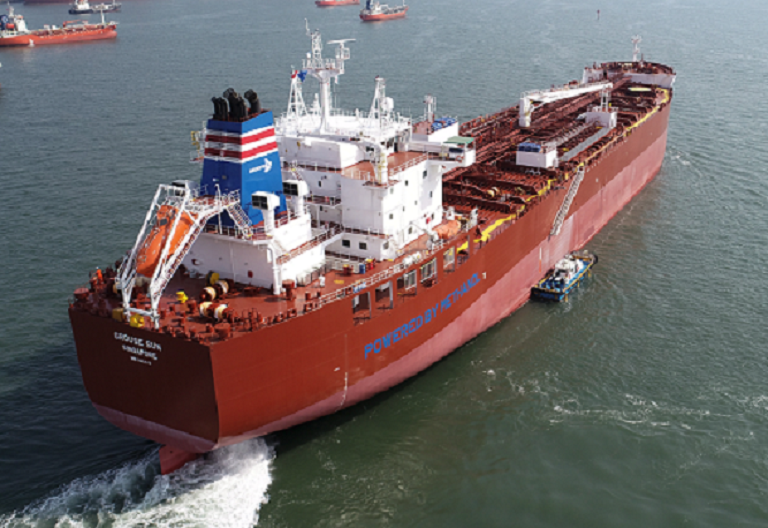Steadily Introducing Environment-Friendly Vessels
The methanol-fueled chemical tanker Grouse Sun, owned by NYK Bulkship (Asia) Pte. Ltd., an NYK Group company based in Singapore, was delivered on April 19. The vessel was built at Hyundai Mipo Dockyard in Korea.

Grouse Sun has been equipped with a dual-fuel engine that can use not only heavy fuel oil but also methanol. Furthermore, when navigating using methanol as fuel, the vessel has a new technology that suppresses the production of NOx (nitrogen oxides) by adding water to methanol to lower its temperature during combustion. As a result, the vessel can comply with the IMO’s stringent Tier III NOx emission standard* and contribute to environment-friendly transportation without the need for an exhaust gas recirculation (EGR) system and a selective catalytic reduction (SCR) device.
Under the management of NYK Shipmanagement Pte. Ltd., an NYK Group company, the vessel will be engaged in a long-term charter contract with Waterfront Shipping Limited, which is a subsidiary company of Methanex Corporation, the world's largest methanol producer.

Vessel Particulars
- Length overall: approx. 186 meters
- Breadth: approx. 32.20 meters
- Gross tonnage: 30,873 tons
- Shipbuilder: Hyundai Mipo Dockyard in Korea
- Flag: Singapore
* NOx emission regulations (Tier III) - The IMO-adopted MARPOL Convention is the main international convention covering the prevention of the pollution of the marine environment by shipping. In line with MARPOL Annex VI (Regulations for the Prevention of Air Pollution from Ships) that came into effect on May 19, 2005, NOx emission controls (tier I controls) for diesel engines installed on vessels were implemented in Japan. Later the convention was revised, and a new NOx emission level (tier II controls) came into force on July 1, 2010. The revised regulation is a very strict one that aims to decrease NOx emission levels by a further 20 percent from that of the first regulation. Moreover, a third control was adopted in 2008, targeting vessels to be constructed from 2016 and limited to emission control areas, to seek the reduction of NOx emissions by about 80 percent from that of the first tier.